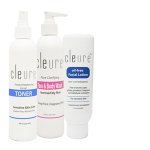Live Without Spongiotic Dermatitis Symptoms
There are many different skin conditions that are often called spongiotic dermatitis. Various types of severe or acute eczema come under this classification.
Affected areas of skin are most commonly found on the stomach, chest, back, and buttocks. Diagnosis depends more on characteristics of the rash itself, rather than the location or cause of the rash.
To be considered spongiotic, the rash will usually consist of small blisters or pustules which have some fluid in them. The skin is red with inflammation and very itchy, but itching can break the skin. Secondary infection caused by itching is of great concern.
In most cases, the condition is chronic and recurring. If you experience this sort of rash, the symptoms are likely to return in the future.
People of all ages can have spongiotic dermatitis. In the case of infants, a severe diaper rash may have spongiotic qualities.
What Causes It?
Dermatitis and eczema are usually symptoms of an allergic reaction to something in your body or in your environment. If it is something new that you've just started using, it can be easy to make the connection to your trigger. It is possible for your body to suddenly react to something that you've been using for a long time, which is harder to pinpoint as a trigger.
Some common causes and triggers include:
- food allergies
- cosmetics, soaps, lotions, etc.
- medications
- laundry detergent
- certain fabrics
- insect bites
- viral or bacterial infection
- stress or exhaustion
- climate and weather changes
- hormonal fluctuation
Any of the above can contribute to the occurrence or re-occurrence of dermatitis for some people, but everyone is different.
An allergic reaction to something can cause your skin cells to change, not just creating symptoms of dermatitis, but in some cases making your skin more sensitive to other irritants as well.
How Is It Treated?
When people first become aware of skin problems, they often try to treat the itchiness and irritation with whatever lotion or ointment they happen to have. This is never a good idea.
Even products that claim to be hypoallergenic or designed for sensitive skin can exacerbate your condition. It is especially not recommended when you have spongiotic dermatitis which may have broken blisters, however small they might be.
Doctors will usually suggest various over-the-counter products or give you a prescription for medicated ointment to treat more serious cases.
Corticosteroids like hydrocortisone are most common. With the right dose, they can be effective in relieving the rash in some cases. In other cases though, corticosteroids can make the situation worse.
Prolonged or repeated use of corticosteroids can have serious side effects, from thinning of the skin to increasing your risk of osteoporosis.
There are natural ways to treat a dermatitis rash. Natural aloe vera is anti-inflammatory, so it can help to reduce redness and itchiness.
With spongiotic dermatitis, there is some risk of bacterial infection. Herbs like calendula and licorice root can be used for their antibacterial and antiseptic properties. Organic apple cider vinegar or even honey can be applied to the rash to reduce risk of infection.
Anytime there are concerns about bacteria, or anytime you're using antibiotics, it's best to take probiotic supplements as well. Good bacteria in your body helps to fight bad bacteria.
The condition is not cured when you get rid of the rash. Once you've addressed your immediate physical symptoms, you will need to focus on preventing future irritation that can trigger your symptoms again.
Prevent Future Outbreaks
It is vital that you stop using many, if not all, of your usual cosmetics and hygiene products. Anything that you put on your skin can affect your condition.
These products tend to have so many different chemicals in them, it's hard to narrow down which ones your skin might react to. Minimize them as much as possible and, if your symptoms are still plaguing you, eliminate more.
Try changing your laundry detergent and cleaning products. You can try natural recipes for household cleaning instead. They are usually less likely to affect your skin, unless you have a food allergy to ingredients used.
It often helps to reduce the processed foods in your diet, especially sugars. Don't use artificial sweeteners instead. Many people have allergic reactions to synthetic sugar.
Decrease your consumption of soda, especially if you drink diet soda, which contains artificial sweeteners. If you drink coffee or tea, try using honey to replace sugar.
If you're on medications for other conditions, talk to your doctor about possible allergic reactions. Ask about alternative medications or natural treatment options, but don't abruptly stop taking them. Contraceptive drugs can affect your skin as well.
Many of these slight changes can make a world of difference when you have spongiotic dermatitis. There is no real cure, but outbreaks can be prevented.
Home > Seborrheic Dermatitis > Spongiotic Dermatitis









New! Comments
Share your thoughts about what you just read! Leave me a comment in the box below.